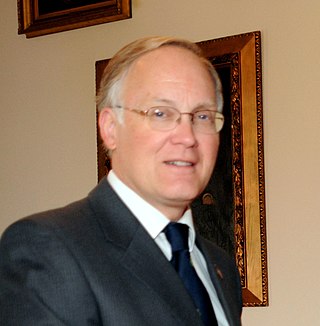
James Holley Douglas is an American politician from the state of Vermont. A Republican, he served as the 80th governor of Vermont from 2003 to 2011. On August 27, 2009, Douglas announced that he would not seek re-election for a fifth term in 2010. He left the office in January 2011.

David E. Zuckerman is an American politician who served as the 84th lieutenant governor of Vermont from 2023 to 2025. He previously served two terms as the 82nd lieutenant governor of Vermont, from 2017 to 2021. A member of the Vermont Progressive Party, he previously served in the Vermont House of Representatives for seven terms (1997–2011), and the Vermont Senate for two (2013–2017). In 2020, Zuckerman was a candidate for governor of Vermont. He ran with the support of both the Progressive Party and the Democratic Party, but lost to incumbent governor Phil Scott in the general election.
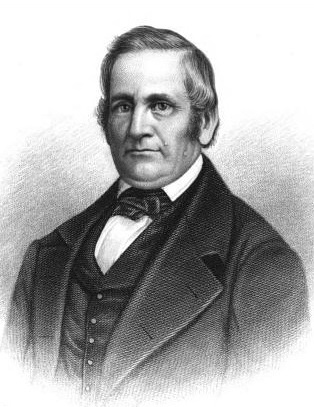
Silas Hemenway Jennison was an American Anti-Masonic and Whig politician who served as Vermont's 11th lieutenant governor and 14th governor of Vermont – the first born in the state.
The politics of Vermont encompass the acts of the elected legislative bodies of the US state, the actions of its governors, as overseen by the Vermont courts, and the acts of the political parties that vie for elective power within the state. The state's politics include local Democratic and Republican political parties, as well as several smaller parties.

Elections in Vermont are authorized under Chapter II of the Vermont State Constitution, articles 43–49, which establishes elections for the state level officers, cabinet, and legislature. Articles 50–53 establish the election of county-level officers.

The 2010 Vermont gubernatorial general election took place on November 2. Vermont and New Hampshire are the only two states where the governor serves a two-year term instead of four. Primary elections took place on August 24.

Philip Brian Scott is an American politician, businessman, and stock car racer who has been the 82nd governor of Vermont since 2017. A member of the Republican Party, he was a representative for the Washington District in the Vermont Senate from 2001 to 2011 and served as the 81st lieutenant governor of Vermont from 2011 to 2017.

The 2014 Vermont gubernatorial election took place on November 4, 2014, to elect the governor of Vermont, concurrently with elections to the United States Senate in other states and elections to the United States House of Representatives and various state and local elections. Incumbent Democratic governor Peter Shumlin ran for reelection to a third term in office against Republican businessman Scott Milne, Libertarian businessman Dan Feliciano and several other minor party and independent candidates.
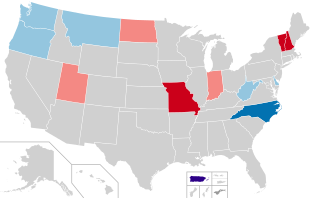
United States gubernatorial elections were held on November 8, 2016, in 12 states and two territories. The last regular gubernatorial elections for nine of the 12 states took place in 2012. The last gubernatorial elections for New Hampshire, Oregon, and Vermont took place in 2014, as Oregon held a special election due to the resignation of Governor John Kitzhaber, while the governors of New Hampshire and Vermont both serve two-year terms. The 2016 gubernatorial elections took place concurrently with several other federal, state, and local elections, including the presidential election, Senate, and House elections.

The 1998 Vermont gubernatorial election took place on November 3, 1998. Incumbent Democrat Howard Dean ran successfully for re-election to a fourth full term as Governor of Vermont, defeating Republican candidate Ruth Dwyer.

The 2002 Vermont gubernatorial election took place on November 5, 2002. Incumbent Democratic Governor Howard Dean did not run for re-election to a sixth full term as Governor of Vermont. Republican Jim Douglas defeated Democratic candidate Doug Racine and independent candidate Cornelius Hogan, among others, to succeed him. Since no candidate received a majority in the popular vote, Douglas was elected by the Vermont General Assembly, as required by the state constitution.

The 1986 Vermont gubernatorial election took place on November 4, 1986. Incumbent Democrat Madeleine Kunin ran successfully for re-election to a second term as Governor of Vermont, defeating Republican candidate Peter Plympton Smith and independent candidate Bernie Sanders. Since no candidate won a majority of the popular vote, Kunin was elected by the Vermont General Assembly per the state constitution.
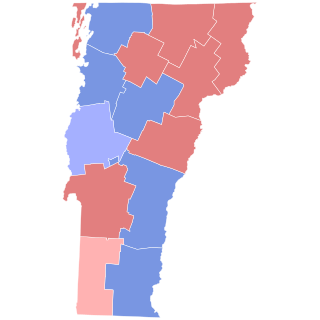
The 1984 Vermont gubernatorial election took place on November 6, 1984. Incumbent Republican Richard A. Snelling did not run for another term as Governor of Vermont. Democratic candidate Madeleine Kunin defeated Republican candidate John J. Easton Jr. to succeed him. Kunin's win coincided with the presidential election, which saw Republican Ronald Reagan win Vermont with nearly 58% of the vote.

The 1962 Vermont gubernatorial election took place on November 6, 1962. Incumbent Republican F. Ray Keyser Jr. ran unsuccessfully for re-election to a second term as Governor of Vermont, losing to Democratic candidate Philip H. Hoff. Hoff was the first Democrat elected Governor of Vermont since 1853. This was also the last time an incumbent governor of Vermont was defeated for re-election.

The 1960 Vermont gubernatorial election took place on November 8, 1960. Incumbent Republican Robert Stafford did not run for re-election to a second term as Governor of Vermont. Republican candidate F. Ray Keyser Jr. defeated Democratic candidate Russell F. Niquette to succeed him.

The 1912 Vermont gubernatorial election took place on September 3, 1912. Incumbent Republican John A. Mead, per the "Mountain Rule", did not run for re-election to a second term as Governor of Vermont. Republican candidate Allen M. Fletcher defeated Democratic candidate Harland B. Howe and Progressive candidate Fraser Metzger to succeed him. Since no candidate won a majority of the popular vote, the election was decided by the Vermont General Assembly in accordance with the state constitution, where Fletcher was elected with 163 votes to 76 for Howe and 32 for Metzger.

The 1902 Vermont gubernatorial election took place on September 2, 1902. Incumbent Republican William W. Stickney, per the "Mountain Rule", did not run for re-election to a second term as Governor of Vermont. Republican candidate John G. McCullough defeated Local Option candidate Percival W. Clement and Democratic candidate Felix W. McGettrick to succeed him. Since no candidate won a majority of the popular vote, the election was decided by the Vermont General Assembly in accordance with the state constitution, where McCullough was elected with 164 votes to 59 for Clement and 45 for McGettrick.

The 1864 Vermont gubernatorial election for governor of Vermont took place on September 6. Incumbent J. Gregory Smith was a candidate for reelection to a second one-year term, in keeping with the provisions of the Republican Party's "Mountain Rule". The Democratic nominee was Timothy P. Redfield, a former member of the Vermont Senate, the Free Soil Party's 1851 nominee for governor, and the Democratic nominee in 1863. In the general election, the Republican Party's dominance of Vermont politics continued, and Smith was easily reelected.
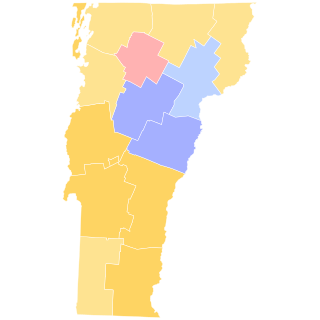
The 1848 Vermont gubernatorial election took place on September 5, 1848 to elect the governor of Vermont. As no candidate received a majority of the votes cast, the Vermont General Assembly elected Whig Carlos Coolidge, the plurality winner, with 122 votes to 65 for Oscar L. Shafter, 54 for Paul Dillingham, and 1 each for Luke P. Poland and William M. Shafter.

The 1847 Vermont gubernatorial election took place on September 7, 1847, and resulted in the reelection of Whig Party candidate Horace Eaton to another one-year term as governor, his second.





















